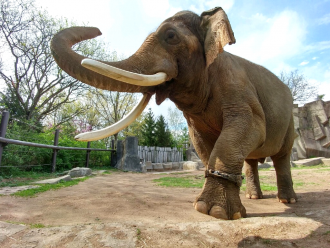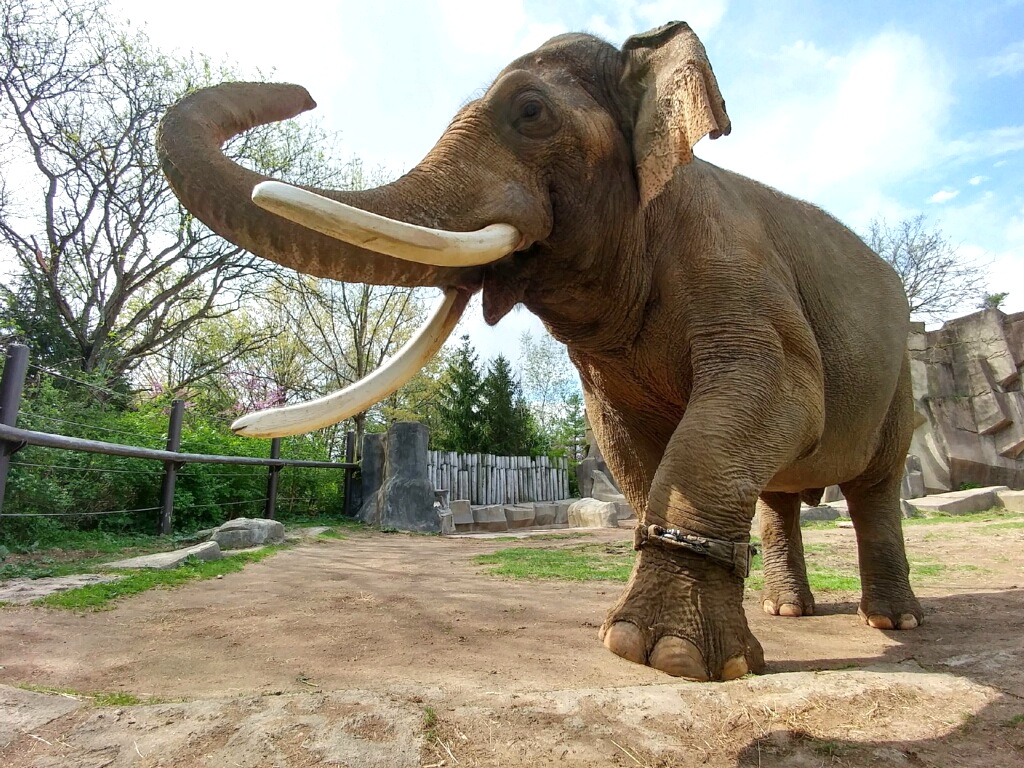News release
From:
Not obese after all: captive Asian elephants less fat than average human
Brief summary: Captive Asian elephants were thought to be fat until scientists from University of Alabama at Birmingham, USA, and the Smithsonian Conservation Biology Institute, USA, directly measured the animals’ fat levels. The scientists made the remarkable discovery that, in contrast to popular belief, the animals carry less fat than the average healthy human and are as active as wild elephants.
Press release: When Daniella Chusy, currently at Indiana University, USA, learned that many captive elephants were thought to be overweight and that their low birth rates suggested that they may be facing a fertility crisis, she began seeing parallels with the obesity crisis humans face currently. But no one had actually measured how much fat captive Asian elephants (Elephas maximus) in zoos carry. ‘I was interested in discovering whether methods predominantly used in human health research could help us learn more about elephants’, says Chusyd at University of Alabama at Birmingham, USA (UAB) at the time. She and her colleagues decided to learn about the relationship between the amount of fat the animals carry and their health and they publish their discovery that captive Asian elephants are less fat than the average human in Journal of Experimental Biology at https://jeb.biologists.org.
‘Obesity is not clearly defined in humans, let alone elephants’, she says. However, Chusyd, Janine Brown at the Smithsonian Conservation Biology Institute, USA, and Tim Nagy (UAB) suspected that they could get a reasonably accurate estimate by paradoxically measuring the amount of water in the elephants’ bodies, which they could then subtract from the body mass to calculate the animals’ fat levels. The best way to measure body water is to give an animal a dose of so-called heavy water, although that is easier said than done; there can be no spillages. ‘We came up with the idea of using bread soaked with heavy water to deliver it to the elephants’, she chuckles, explaining that the animals are particularly partial to the treat; ‘I quickly became their best friend’, she smiles. The animals’ keepers also collected blood samples before and up 20 days after the elephants consumed the heavy water, to track the quantity of heavy water in their bodies.
Returning to UAB with the samples from zoos across the USA and Canada, Chusyd analysed them with support from Catherine Hambly and John Speakman at the University of Aberdeen, UK. Calculating the animals’ body water and fat content, they found that on average the males carried slightly less fat (~8.5%) than the females (~10%) – healthy humans average 6–31% fat. Overall, the females’ body fat ranged from 2% to 25%, although the males were larger and carried more total fat. But how did the animals’ fat levels correlate with their overall fitness and fertility?
Fitting each animal with an elephant-sized fitness tracker, the team was pleased to see that the captive animals were walking similar distances (between 0.03 and 2.8km each hour) to free-ranging animals,
with the youngest elephants walking the farthest. In addition, when David Allison, Lilian Gozarri-Arroyo and Stephanie Dickinson at Indiana University compared the females’ fertility, they were surprised that the infertile females carried the least fat, more similar to the disrupted fertility cycles of underweight female humans.
However, when the team compared the animals’ insulin levels, the fattest elephants tended to have the highest insulin levels. ‘It is possible that elephants could develop a diabetic-like state’, says Chusyd, adding that the jury is still out on whether captive Asian elephants experience obesity. But when it comes to the care provided by zoos for the majestic mammals, Chusyd says, ‘They are doing a great job … they know their individual elephants best’, adding that activity seems to be the key to keeping elephants in shape.
*************************
IF REPORTING THIS STORY, PLEASE MENTION JOURNAL OF EXPERIMENTAL
BIOLOGY AS THE SOURCE AND, IF REPORTING ONLINE, PLEASE CARRY A LINK TO:
Multimedia




 International
International



